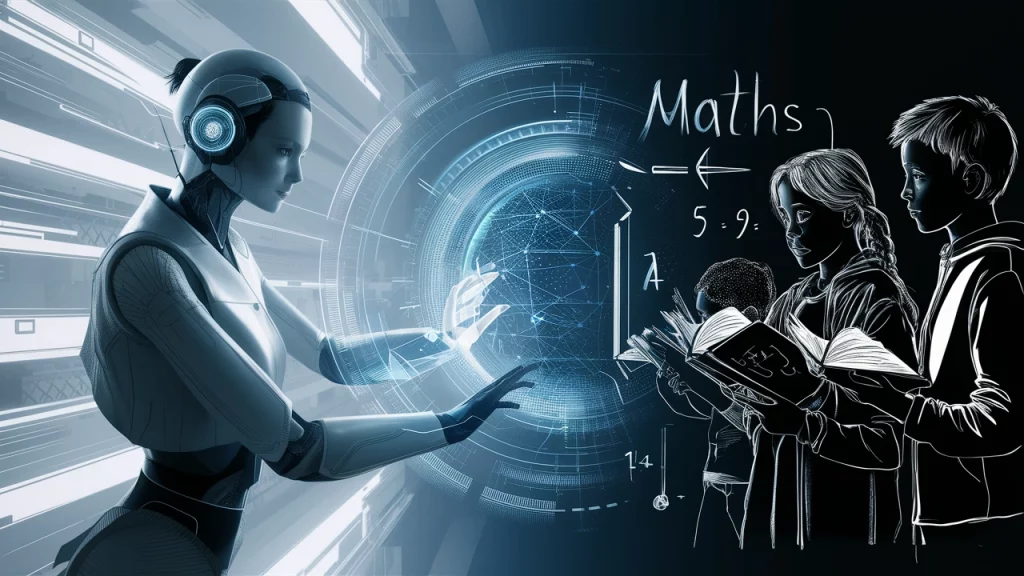Learning Math with AI-Powered Tutoring Gadgets
- Lifestyle
-
- UPDATED June 18, 2025

by Kristine Bowman
341 shares
Math is everywhere. It hums in the code of your phone, lurks in your bank statements, and dances in video game physics. Yet for millions of students, it remains a mysterious terror lurking in the textbook shadows. Enter: AI-powered tutoring gadgets. These aren’t your average clicky calculators or dusty whiteboards; we’re talking handhelds and apps with brains—devices that not only teach, but adapt, listen, and respond.
Stat time: According to a 2024 education tech report, AI-based tools have helped improve math performance by 30% in middle schoolers across several U.S. districts. Why? Because they’re not just gadgets—they’re personalized mini-teachers packed into pocket-sized rectangles.
How AI Is Rewriting the Math Rules
Forget memorizing formulas without understanding them. AI gadgets now evaluate how you think. They learn from your mistakes, pause when you hesitate, and sometimes, weirdly, seem to know what you were about to get wrong. Some even use voice recognition to talk back—not in a robotic Siri tone, but in ways that resemble an actual tutor. A patient one.
Take MathWhiz Mini, for example—a slim device that adapts its problem sets depending on how quickly and accurately you solve them. Got stuck on fractions? It shifts to visuals. Mastered algebra basics? It throws in real-world scenarios.
The result? Less “Why do I need this?” and more “Okay, I kind of get it now.” AI isn’t just answering your questions—it’s watching your cognitive patterns, identifying your logic gaps, and gently prodding you back on track.
The Social Side of a Solitary Subject
Math often feels isolating. One kid sits in the back, doodling triangles. Another is silently panicking over long division. But here’s a twist: AI gadgets aren’t just personal—they’re also social.
There’s also the psychological factor. AI doesn’t judge. It doesn’t laugh when you get the answer to 9×7 wrong four times in a row. It offers a reset button, and another, and another, until the concept finally clicks. And it clicks for more students than traditional methods do—especially neurodivergent learners who often struggle with rigid classroom pacing.
Gadget Features That Actually Make a Difference
Not all gadgets are born equal. Some are noise. Some are gold. Here’s what sets the helpful ones apart:
- Natural Language Feedback: You explain your answer verbally, and the device responds—not with “wrong,” but with “let’s try another way.”
- Error Pattern Detection: Advanced models like CogniMate identify recurring slip-ups, then nudge you toward understanding why.
- Gamified Rewards: Earning points for solving three geometry problems before breakfast? It’s a thing. The reward loop matters.
- Real-time Graphing Tools: Sketch a parabola by hand, the camera scans it, and boom—it tells you where you went off-track.
- Adaptive Timing: Sessions stretch or shrink depending on how focused you are. Some gadgets sense your stress level and suggest breaks. Creepy? A little. Useful? Incredibly.
But your smartphone or PC can also turn into a gadget for solving math problems. Want an example? Try a math solver extension, which can take a screenshot of a problem on the screen and give an answer. Moreover, the math solver for Chrome not only gives a solution, but also describes the stages of solving problems. There are many options for using math solvers: strengthening your knowledge, saving time on solving routine problems, quickly solving formulas in batches, etc.

Do These Really Work, Though?
Let’s go hard on numbers. A pilot study from TechEd Global involving 1,200 students aged 10-16 found this:
- Students using AI-powered gadgets improved test scores 27% faster than those relying on standard homework alone.
- 61% of students said they liked learning math more after using the gadgets for three months.
- 42% of parents reported fewer emotional breakdowns at the kitchen table. (That last one feels like a real win.)
Even in underfunded schools where devices were shared rather than owned individually, the jump in math fluency surprised researchers.
Futureproofing the Formula
We’re not headed for robot teachers (at least not soon), but hybrid models—where human educators partner with AI tutors—are proving powerful. The device covers fundamentals, repetition, and diagnostics. The teacher zooms in on creativity, logic, and real-world application.
Soon, AI gadgets may not just correct equations but explain the philosophy of numbers—why infinity matters, what primes say about nature, how zero changed the world. That’s the dream.
And who knows? Maybe next time you’re stuck on calculus at 2 a.m., your little AI buddy will whisper something better than a solution. Maybe it’ll say: “You’re not bad at math. You just needed someone to teach it right.”
Wouldn’t that be a twist?
TL;DR
Tutoring gadgets powered by AI are changing the way students interact with math. They’re personalized, responsive, and shockingly empathetic. Use them.